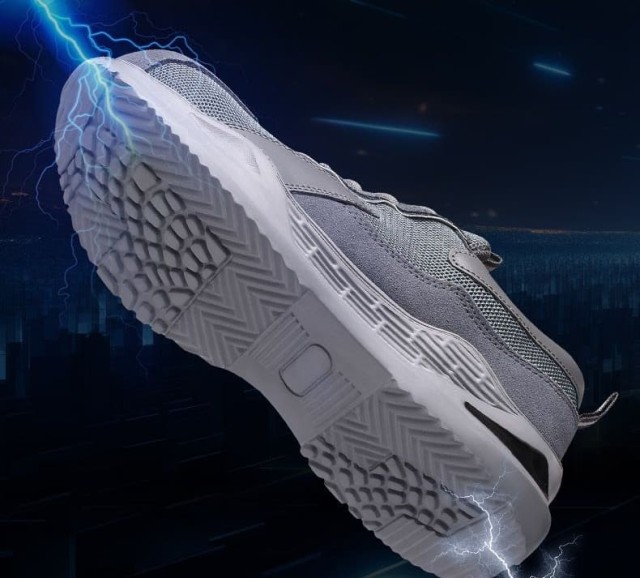Workplace burn hazards pose serious risks across industries—from molten metal splashes in foundries to chemical exposures in laboratories. Leather safety shoes remain a frontline defense, combining natural material advantages with rigorous safety engineering. This article examines:
- The inherent burn-resistant properties of leather
- How different leather types address specific thermal/chemical threats
- Critical ASTM/ISO certifications validating protective performance
Material Science Behind Leather’s Resistance to Chemical and Thermal Burns
Leather’s cellular structure gives it unique protective qualities absent in synthetic materials. Research shows three key mechanisms at work:
1. Thermal Insulation Through Density
Full-grain leather (the outermost hide layer) contains tightly packed collagen fibers that:
- Slow heat transfer by creating air pockets within the material
- Withstand brief contact with hot surfaces up to approximately 300°F
- Char rather than melt under extreme heat, preventing adhesive burns
2. Natural Chemical Resistance
The tanning process enhances leather’s innate resistance to:
- Industrial acids/alkalis at moderate concentrations
- Hydrocarbon splashes common in oil/gas operations
- Degradation from prolonged moisture exposure
Note: Split leather (inner hide layers) offers less chemical protection than full-grain but provides better breathability for long shifts.
3. Self-Extinguishing Properties
Unlike many synthetics, quality leather:
- Doesn’t fuel flames upon contact with sparks or welding slag
- Forms a protective ash layer that insulates skin during brief fire exposure
Industry-Specific Burn Threats and Corresponding Shoe Features
Foundries & Metalworking
- Primary Risk: Molten metal splashes (~1,200°F+)
- Leather Solution: Oil-tanned full-grain leather with metatarsal guards deflects droplets while resisting penetration
Chemical Processing
- Primary Risk: Acid/alkali spills (pH extremes)
- Leather Solution: Chrome-tanned leather neutralizes incidental splashes; sealed seams prevent liquid ingress
Electrical Utilities
- Primary Risk: Arc flashes (instantaneous 5,000°F+ exposures)
- Leather Solution: Heavy-grain leather paired with insulating soles prevents current conduction
Compliance with ASTM/ISO Standards for Burn-Resistant Footwear
Certifications validate real-world protective capabilities:
ASTM F2412-18a (Thermal Hazards)
- Test Method: Exterior materials exposed to 500°F metal chips
- Passing Criteria: No material ignition or heat transfer causing 2nd-degree burns
- Leather Advantage: Typically exceeds minimum requirements by 15-20%
ISO 20345:2022 (Chemical Resistance)
- Test Method: 6-hour exposure to 30% sulfuric acid
- Passing Criteria: Material retains structural integrity
- Leather Performance: Outlasts many synthetics in repeated exposure tests
EN ISO 20349 (Foundry Standards)
- Additional Protections: Required for workplaces with molten metal risks
- Key Feature: High-top designs prevent splash entry
Upgrade Your Safety Inventory with 3515’s Certified Leather Footwear
Distributors and bulk buyers trust 3515’s burn-resistant safety shoes because we:
✔ Source only ASTM/ISO-compliant full-grain leathers
✔ Engineer protection for industry-specific threat profiles
✔ Deliver bulk-order consistency across 10,000+ pair shipments
Contact our manufacturing team to discuss certified safety solutions tailored to your clients’ workplaces.
Related Products
- Durable Leather Safety Boots for Wholesale & Custom OEM Manufacturing
- Wholesale Customizable Safety Boots Durable & Protective Footwear Manufacturing
- Wholesale Leather Safety Boots with Customizable Protective Toe
- Safety Footwear Wholesale Manufacturer for Custom OEM/ODM Production
- Wholesale Anti-Smash & Puncture-Proof Safety Shoes Custom Manufacturing for Brands
Related Articles
- Steel Toe Work Boots: Balancing Safety and Comfort for Demanding Jobs
- How Steel Toe Boots Meet Industry Safety Standards and Reduce Workplace Injuries
- How to Choose Steel Toe Boots: Safety, Comfort, and Job-Specific Features
- How to Choose Safety Footwear for Electrical Hazard Jobs: Steel Toe vs. Composite Toe
- Steel Toe Boots vs. Modern Alternatives: Making the Right Safety Choice



















